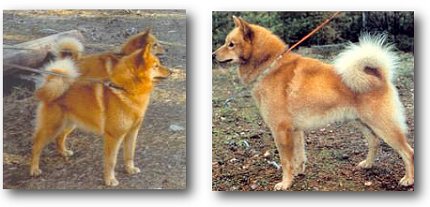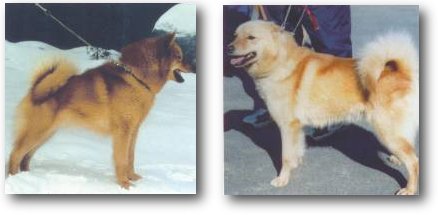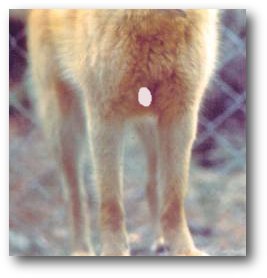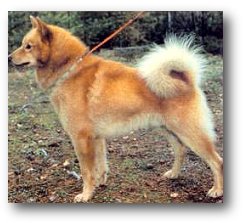Type Follows
Function
Key Elements of
the Breed
Shape
Forequarters
& Hindquarters
Head
Tail
Coat
Other Matters
Back to Toveri
|
Coat |
 |
| Colour |
|
These colours are beautiful. Young dogs and bitches may have quite a lot of black hairs in the coat but most of these should be gone by the time they are two years old with exception of a very few in the tail feathering. The important element is the shaded rich red/gold that you can see clearly on these dogs. The colour can be quite light but should never verge on yellow. The shading is important. The dogs hunt on the autumn and they should blend into their surroundings apart. A single, flat dull red or yellowing colour looks and is, very plain. The creamy colour on the tail and thighs is important too. The dog hunts by pointing and then attracting game birds in trees. As the tail waves to and fro the bird is transfixed by is and will remain looking at is while the hunter approaches.
|
 |
|
These colours are quite wrong although they are often seen. The dog on the left is far too dark with layers of very dark, almost black hairs across the shoulders. The dog on on the right is too light and the shading far too creamy. Any suggestion of ‘sootiness’ in the coat is quite wrong as is any sign of yellow.
|
 |
| At one time many Finnish Spitz were shown with quite large patches of white on the fore chest. This is still seen occasionally. ‘None’ is best but a small patch, about the size of a standard match box may be ignored. Any large amount – and certainly any white on the leg should be heavily penalised. In Finland such dogs would be disqualified. The area shown here is the absolute maximum in terms of ‘area’ although sometimes the white will be a narrow strip across the chest and sometime a narrow strip that runs along and underneath the chest. |
| Quality |
 |
| The coat is a typical Spitz double coat with a dense soft under layer and a harsh, almost coarse top layer of guard hairs. It is not long. It much more like the coat of an Akita, Elkhound or Siberian Husky (although slightly longer proportionally), than a Keeshond or a Samoyed. It is longer on the body and round the neck and stands away from the body in those areas. It ‘fluffs up on the the tail, trousers. On the shoulders it lays closer but is still semi-erect. The breed should always be ‘tidy’. Other than the tail feathering or if the coat is coming out, if the coat is ‘blowing about’, it is too long. The coat should never be ‘wavy’.
|